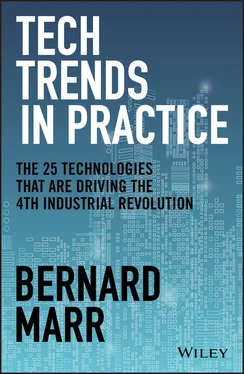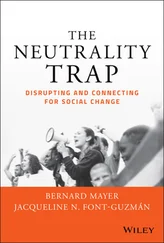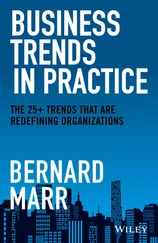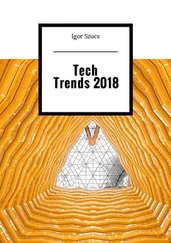Restoring Movement Through Advanced Robotic Limbs
Prosthetics have come a long way, and the cutting edge is prosthetics that are controlled by neural activity to restore motor function to amputees. One example is an advanced mind-controlled robotic arm created by Johns Hopkins Applied Physics Lab. 11
Developed by Haptix, DEKA, and the University of Utah, the Luke neuroprosthetic hand (yes, it’s named after Luke Skywalker) aims to restore the sense of touch to amputees by helping recipients “feel” intuitively through the prosthetic. 12In tests, the wearer was able to pick up an egg without cracking it and hold his wife’s hand – and thanks to electrodes implanted in the subject’s forearm, the hand triggered touch sensations such as vibrations, pain, pressure, and tightening.
Elsewhere, at the National University of Singapore, scientists have created an artificial skin that can sense better than human nerves, and could one day be used to cover prosthetic limbs. 13
Implanting Lab-Grown Organs
Researchers at Massachusetts General Hospital and Harvard Medical School have teamed up to create stem cells that can be used to form heart tissue. The tissue even beats when given an electric shock. And at the University of Glasgow and the University of the West of Scotland, scientists have used bone marrow cells to create a putty that can be used for bone grafts. 14
We could even 3D print organs. For example, bioprinting company Organovo has been able to 3D print human liver tissue patches, which have been successfully implanted into mice 15(more on that in Trend 24).
Augmenting the Human Brain Through Mind-Reading Technology
In the future, wearable technology may not be limited to enhancing humans’ physical activity, but our mental activity, too. Here are two prominent examples of the move towards merging humans with computers:
In a study backed by Facebook, scientists at the University of California San Francisco have created a brain–computer interface that translates brain signals into dialogue – meaning technology can decode speech directly from the human brain, without us having to say or type a word. 16
Never one to be outdone by Mark Zuckerberg, Elon Musk’s Neuralink company is working towards an ultimate goal of merging the human brain with AI, with human trials potentially coming this year. 17
As the examples in this chapter show, we’re clearly well on our way to augmented humans. The prospect of humans merging with machines no longer seems like the imaginative plot of a sci-fi movie – but is a genuine goal for some technology companies. But with this ambitious goal comes some major challenges.
For one thing, if projects like the mind-reading technology being developed by Facebook and Neuralink do succeed, it could have huge implications for privacy. Do we really want AI to be able to decode our thoughts? And do we really want that data in the hands of for-profit companies like Facebook? I know I don’t. Before technology like this becomes the norm, there would need to be some serious leaps in people’s understanding of the precious data they’re giving over to these companies (considering that most people today, in my experience, massively underestimate the things companies like Facebook and Google already know about them). And the companies offering this technology would need to make genuine strides in how seriously they take data privacy and ethics.
And at a societal level, we could be heading towards even greater divides between rich and poor, between the haves and the have-nots. Technology is promising to help us live longer and healthier lives – maybe even the chance to live forever – but probably only for those who can afford it. Imagine a society in which the rich are effectively superhumans that live forever, and everyone else is enormously disadvantaged. Not a happy thought, is it? (There’s also a wider ethical question around whether we should want to live exceedingly long lives, given the huge strain that would put on our planet.)
Finally, as humans begin to merge with machines, we may ultimately need to rethink what it means to be human. Will, for example, AIs be covered by human rights legislation? And what will the term “human rights” even mean when humans have transformed themselves into something entirely new?
How to Prepare for This Trend
Finding practical takeaways and action points can be tough when you’re talking about heavy stuff like the very fabric of what makes us human! But there are practical steps your organization can take to benefit from what’s happening in wearable technology right now.
From the plethora of smart devices and smart clothing on the market, it’s clear that consumers are welcoming intelligent wearables that can deliver new insights and help them live healthier, better lives.
Therefore, if your company manufactures wearable products or devices, consider whether it’s possible to make those products smarter and deliver more value to your customers through intelligent insights. And from a service point of view, consider whether the wearables trend could help you offer more intelligent services. The insurance industry provides a great example of this, where customers with health or life insurance policies are rewarded for leading healthier, more active lives, by tracking their activity data through a smart watch or fitness tracker.
1 1 Here Are the First Hints of How Facebook Plans to Read Your Thoughts: https://gizmodo.com/here-are-the-first-hints-of-how-facebook-plans-to-read-1818624773
2 2 Elon Musk Isn’t the Only One Trying to Computerize Your Brain. Wired: www.wired.com/2017/03/elon-musks-neural-lace-really-look-like/
3 3 Apple Watch could add two years to your life, research suggests. The Telegraph: www.telegraph.co.uk/news/2018/11/28/apple-watch-could-add-two-years-life-research-suggests/
4 4 Apple Watch 4 is Now An FDA Class 2 Medical Device. Forbes: www.forbes.com/sites/jeanbaptiste/2018/09/14/apple-watch-4-is-now-an-fda-class-2-medical-device-detects-falls-irregular-heart-rhythm/#30ff9a2d2071
5 5Ford Adding EksoVest Exoskeletons to 15 Automotive Plants: www.therobotreport.com/ford-eksovest-exoskeletons-automotive/
6 6Ottobock reaches for growth with industrial exoskeletons: https://uk.reuters.com/article/us-ottobock-exoskeletons-focus/ottobock-reaches-for-growth-with-industrial-exoskeletons-idUKKCN1LR0LI
7 7MIT’s new robot takes orders from your muscles. Popular Science: www.popsci.com/mit-robot-senses-muscles/
8 8This robotic tail gives humans key abilities that evolution took away: www.nbcnews.com/mach/science/robotic-tail-gives-humans-key-abilities-evolution-took-away-ncna1041431
9 9Superhuman Vision: Bionic Lens. Medium: https://medium.com/@tinaphm7/superhuman-vision-bionic-lens-ad405fc42127
10 10Samsung patents “smart” contact lenses that record video and let you control your phone just by blinking. The Telegraph: www.telegraph.co.uk/technology/2019/08/06/samsung-patents-smart-contact-lenses-record-video-let-control/
11 11Florida Man Becomes First Person to Live With Advanced Mind-Controlled Robotic Arm: https://futurism.com/mind-controlled-robotic-arm-johnny-matheny
12 12Robotic Hand Restores Wearer’s Sense of Touch. Smithsonian: www.smithsonianmag.com/smart-news/robotic-hand-restores-wearers-sense-touch-180972737/
13 13Artificial skin can sense 1000 times faster than human nerves. New Scientist: www.newscientist.com/article/2210293-artificial-skin-can-sense-1000-times-faster-than-human-nerves/
14 147 human organs we can grow in the lab: https://blog.sciencemuseum.org.uk/7-human-organs-we-can-grow-in-the-lab/
Читать дальше












